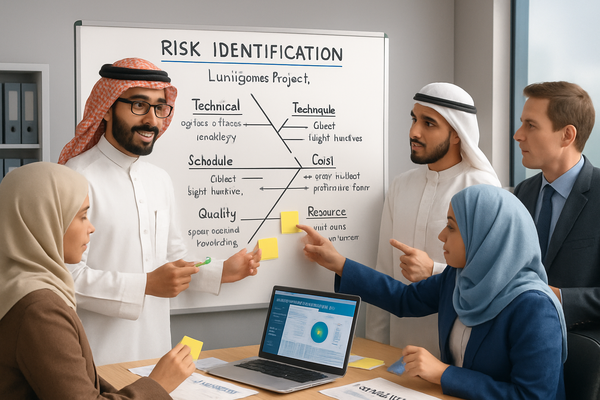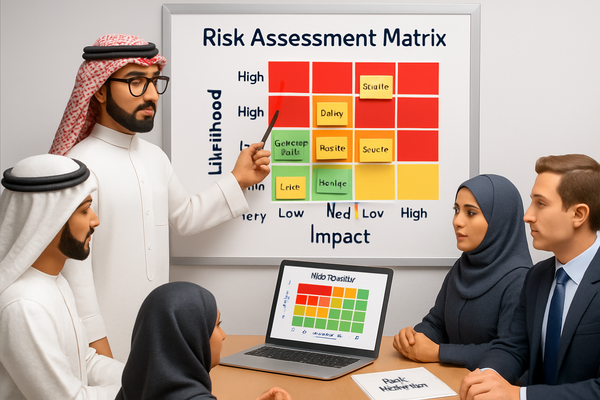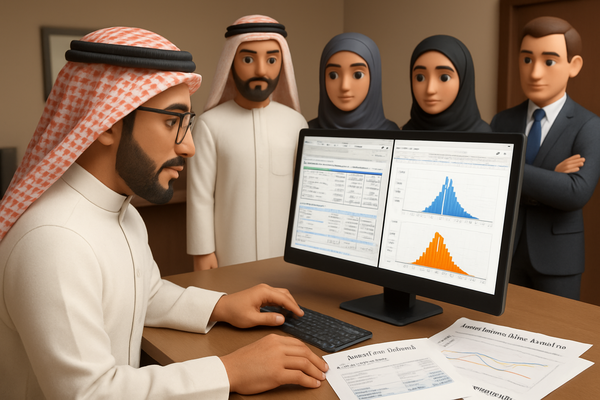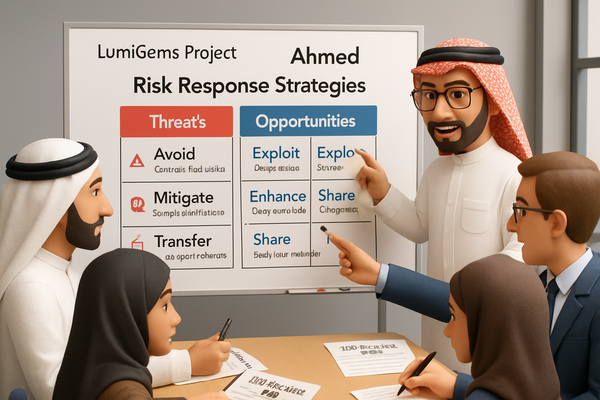Risk Management: Navigating Uncertainty for LumiGems
Ahmed proactively addresses potential threats and opportunities that could impact the LumiGems project.

Ahmed brainstorms with the team and stakeholders to identify potential risks – both threats and opportunities – that could affect LumiGems. This includes technical, market, resource, and external risks.

Ahmed assesses the likelihood and impact of each identified risk. This helps prioritize risks, often using a probability/impact matrix, to determine which ones need urgent attention for LumiGems.

For high-priority risks, Ahmed may perform a numerical analysis of their effect on LumiGems' objectives. This could involve techniques like Monte Carlo simulation or sensitivity analysis to understand financial or schedule impacts.

For each significant risk, Ahmed and the team develop strategies to address it. This includes plans to avoid, mitigate, or transfer threats, and to exploit, enhance, or share opportunities for LumiGems.

Ahmed consolidates all risk-related activities, methodologies, roles, responsibilities, budget, and timing into the formal Risk Management Plan. This document guides how risks will be managed throughout the LumiGems project.